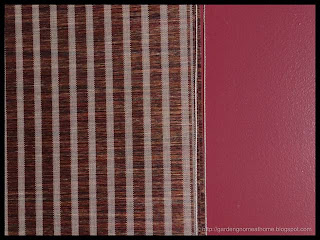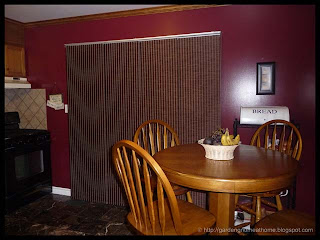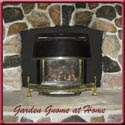Patio doors are always a bit more difficult to choose some type of covering. It is a big expanse of glass that can cause considerable thermal loss at night especially during the winter months and yet during the summer months the solar gain can be enough to make the room unbearably hot. In both cases, patio doors can end up increasing your heating and cooling costs. We had two sets of patio doors in our last house but chose not to cover them so we could enjoy the gorgeous view. Privacy wasn't an issue and the property was very shaded in the summer so leaving them bare wasn't a problem. We have patio doors at our vacation home with the standard vertical blinds. This house has patio doors in the kitchen with the summer sun being problematic in the morning and one of our neighbour's windows looking directly into. So far privacy has not been an issue. I wanted something to lessen the solar gain during the summer while providing a bit of privacy when desired. At the same time I didn't want the standard vertical blinds.

I decided to order custom treatments for the patio doors and the large living/dining room window. Unfortunately, the living/dining room window treatment turned out to be a nightmare AND they brought out the wrong fabric panels for the patio doors. Although the living/dining room window treatment remains unsettled, we finally got the patio doors finished in the panels we had ordered. This is precisely why on any custom window treatment being installed by the company, you should never pay more than a deposit until they are installed and you are satisfied with the install.
We chose Levolor® PanelTrac™custom made for our patio doors in woven weaves 23501 Totem Pole. The colours match nicely with the kitchen and if you look close the colours of the rest of the house (taupe, moss green, navy blue) are in the weave as well. Ours is a four panel, one way draw, light filtering covering. Each panel attaches to the carrier on the head rail via Velcro strips making them easy to change and clean. When opened with the auto wand, each panel stacks one behind the other. Unlike the standard vertical blinds, these panels do not turn so cannot be adjust in that manner. They simply slide back and forth.
Levolor® offered a wide range of panels to choose from. The solar panels don't completely block out the view but rather block the solar gain during the day and the heat loss at night. The opacity is noted for each fabric so you can get panels offering no opacity to those with 95% opacity. The higher the opacity the less you can see out or others see in.
During the day, we can still see out somewhat but our neighbours can't see in. This is perfect in the mornings when we are still in pajamas and sporting bed head. They are working quite nicely to control the solar gain during the mornings. By lunchtime, I can open them fully to take advantage of the natural light without the solar gain.
At night, the light filtering works in reverse so if there is a light on in the kitchen, the neighbours could see in. However, we chose a heavy enough weave (95% opacity) they would likely only be able to see shadows, nothing clearly. Without lights on, you can't see through them, perfect in the event of an attempted break-in and when we are on vacation. We are used to this as the panels work very much like the SolarGuard window film we installed in one of our houses where solar gain was a huge problem during the summer months.
I really like the way the PanelTrac™ looks. We may put a custom wood valance on it but haven't decided yet. All around though, dealing with this particular local business has left a rather nasty taste in our mouths. We won't deal with them again! It took them almost three weeks to get the PanelTrac™ to what we ordered and the living/dining room (Eclipse shutters) still has the old sheers after they installed incorrectly without the necessary parts. The shutters could not be opened and when I tried, one fell off and hit me. I finally told them to take the shutters down and take them back. They 'said' they would make it right but we've heard nothing from them since being home from vacation. In case you are wondering, the PanelTrac™ cost us $680.26 plus $25 for installation. There is a lifetime warranty against manufacturing defects and a 5 year on the panels themselves.
Garden Gnome
©2006-2012



















